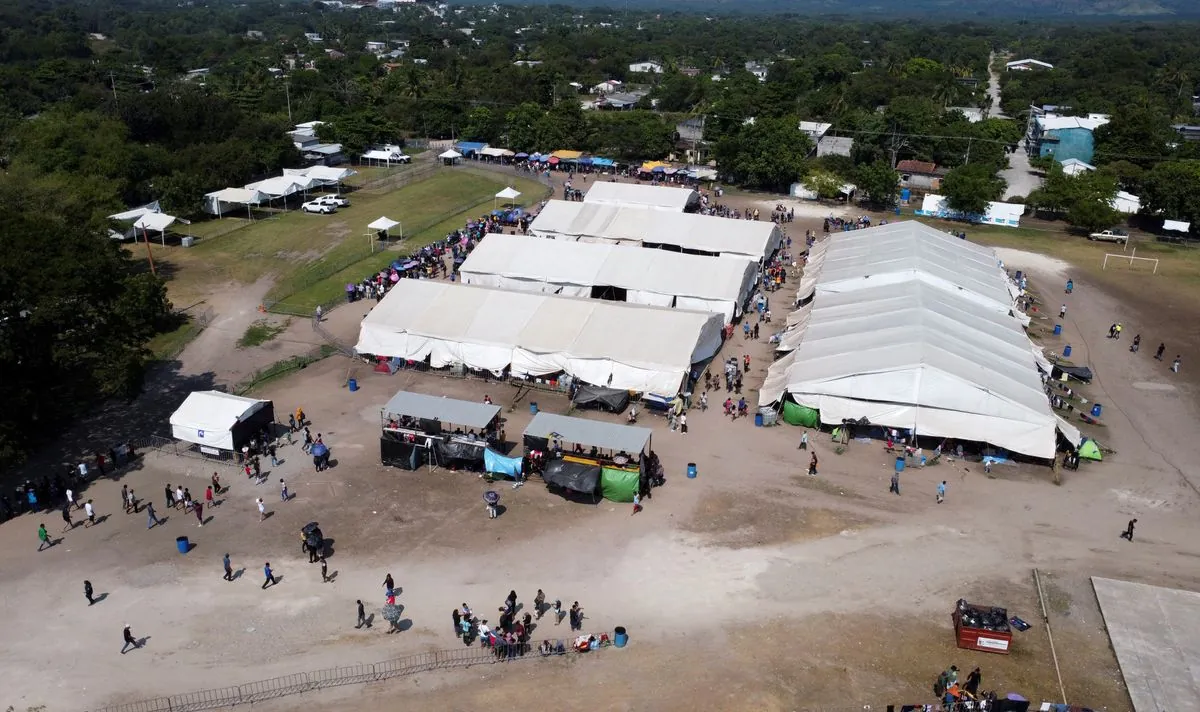Mexico City: Migrant Camps Emerge as U.S. Asylum Policies Shift
Mexico's capital becomes a temporary home for thousands of migrants seeking U.S. asylum. Makeshift camps arise as people wait months for appointments through the CBP One app, facing challenges and tensions with locals.

In recent months, Mexico City has transformed from a transit point to a temporary destination for thousands of migrants seeking asylum in the United States. This shift is largely due to changes in U.S. asylum policies and the implementation of the CBP One mobile application.
Since June 2023, when the Biden administration introduced significant restrictions on asylum seekers, the CBP One app has become one of the primary methods for requesting asylum at the Southwest border. This policy change has led to the emergence of migrant encampments throughout Mexico City, where individuals and families wait for weeks or even months to secure appointments.

The Mexican capital, situated 2,240 meters above sea level, now hosts several makeshift camps where migrants face numerous challenges. These "ranchitos," as some call their temporary homes, are constructed from various materials such as wood, cardboard, and plastic sheets. Despite efforts to maintain cleanliness and organization, residents struggle with poor sanitation, limited access to healthcare, and exposure to Mexico City's subtropical highland climate.
One of the largest camps, located in the La Merced neighborhood, houses up to 2,000 migrants, with approximately 40% being children. Héctor Javier Magallanes, a Venezuelan migrant who has been waiting nine months for a CBP One appointment, described the community's efforts to improve living conditions:
"At the beginning there were a lot of problems, lots of trash and people in Mexico didn't like that. We made sure to fix those problems little by little."
The prolonged wait times and uncertain future have taken a toll on migrants' mental health. Israel Resendiz, coordinator of Doctors Without Borders' mobile team, noted the psychological impact of living in limbo.
Tensions between camp residents and local communities have escalated, sometimes resulting in mass evictions. In late April 2024, residents of the Juárez neighborhood protested against the presence of migrant camps, highlighting the complex social dynamics at play.
As Mexico City grapples with this new reality, it's worth noting that the city has a rich history of adapting to challenges. Home to numerous cultural institutions and a UNESCO World Heritage site, the capital has previously addressed issues such as air pollution and subsidence. However, the current situation presents unique difficulties for both migrants and local authorities.
The emergence of these camps underscores the far-reaching effects of U.S. immigration policies on neighboring countries. As Mexico City continues to serve as a temporary home for thousands of asylum seekers, the need for comprehensive solutions becomes increasingly apparent.


































